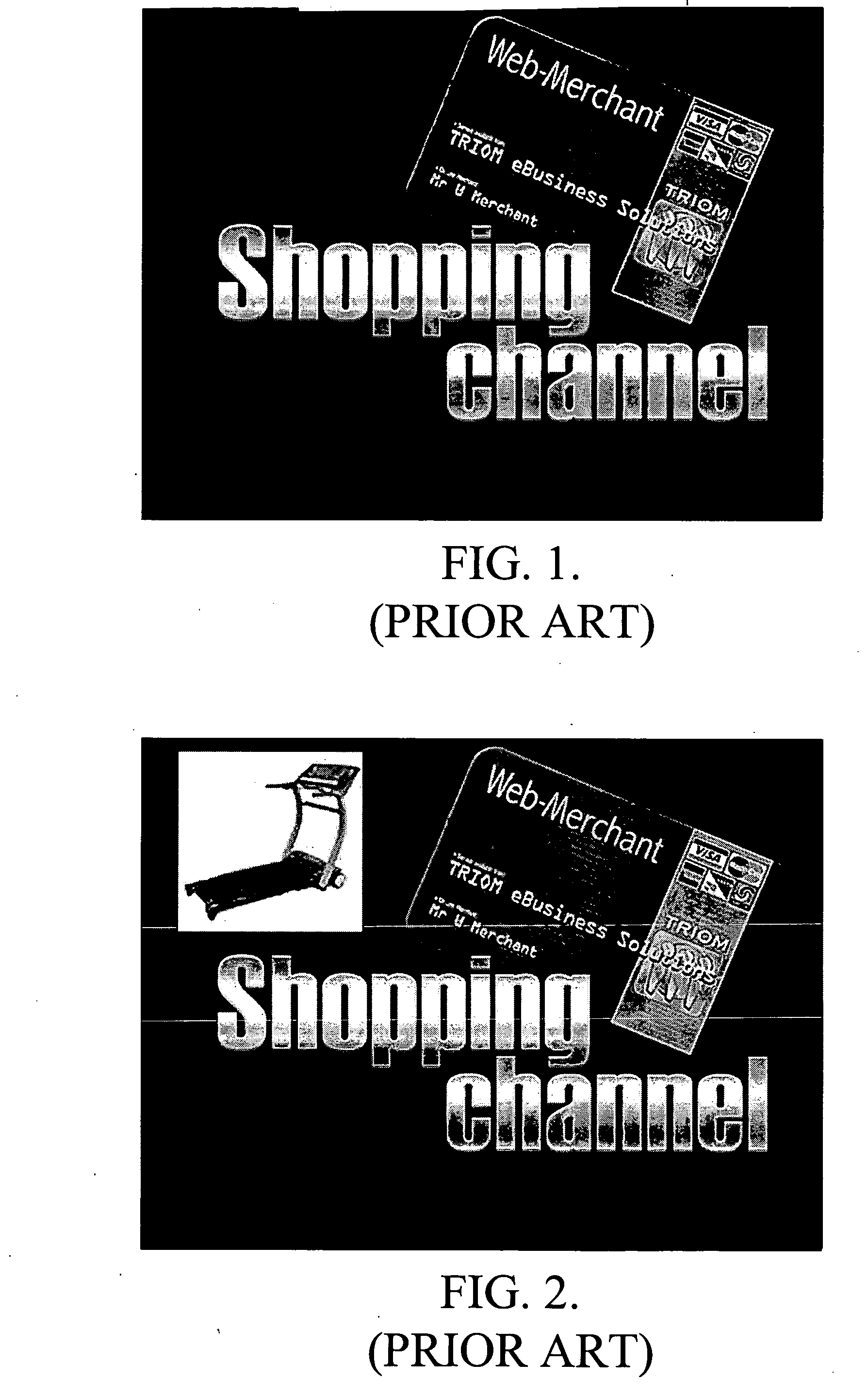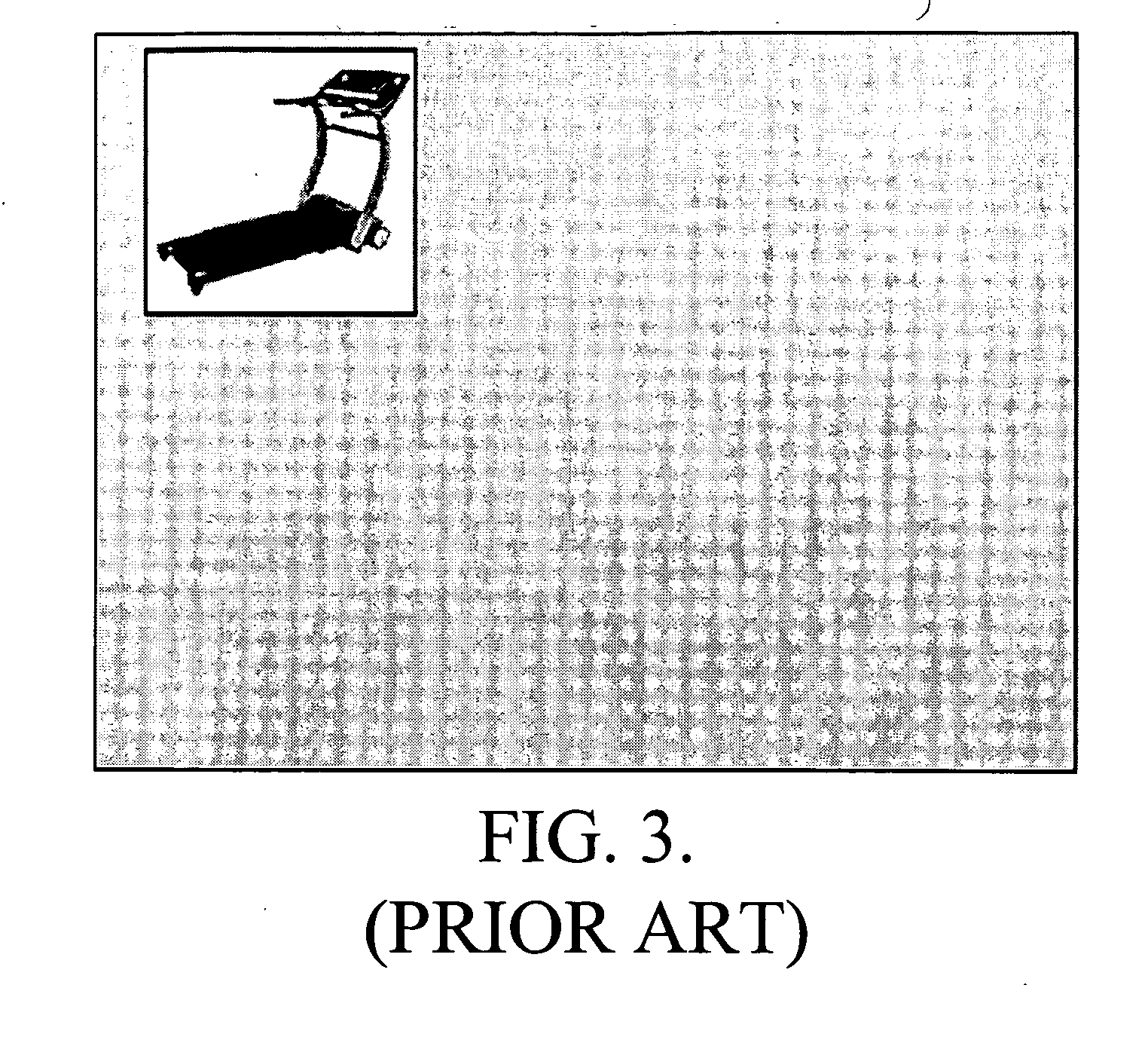Flexible use of MPEG encoded images
a technology of mpeg and encoded images, applied in the field of bandwidth reduction in the transmittal of images, can solve the problems of limited capability, limited hardware and software capability, and limited graphical content, and achieve the effect of reducing bandwidth, reducing bandwidth, and reducing bandwidth
- Summary
- Abstract
- Description
- Claims
- Application Information
AI Technical Summary
Benefits of technology
Problems solved by technology
Method used
Image
Examples
Embodiment Construction
[0028] The current invention defines a special format for MPEG video data, which results in an intermediate sub-frame image data file (the ‘Q-frame’ format) which is not compliant with the MPEG standard, but which can be used efficiently to create a compliant MPEG P-frame data file, with the sub-frame positioned at any desired (macroblock) position within the full video frame.
[0029]FIG. 6 shows a diagram of a system 20 that creates and uses Q-frame data files. Prior to broadcast, a sub-frame image file passes through a special MPEG video encoder device 30 that produces the intermediate Q-frame file. The Q-frame file is multiplexed with other audio, video and data content for broadcast by the device 30, a broadcast device 34 or some other multiplexing device. The multiplexed data stream is broadcast to a Set-Top Box (STB) 36 over a broadcast network 32. The STB 36 extracts the Q-frame data and passes the Q-frame data to an iTV application running on the STB 36. The iTV application, ...
PUM
 Login to View More
Login to View More Abstract
Description
Claims
Application Information
 Login to View More
Login to View More - R&D
- Intellectual Property
- Life Sciences
- Materials
- Tech Scout
- Unparalleled Data Quality
- Higher Quality Content
- 60% Fewer Hallucinations
Browse by: Latest US Patents, China's latest patents, Technical Efficacy Thesaurus, Application Domain, Technology Topic, Popular Technical Reports.
© 2025 PatSnap. All rights reserved.Legal|Privacy policy|Modern Slavery Act Transparency Statement|Sitemap|About US| Contact US: help@patsnap.com



